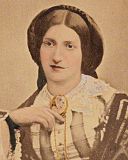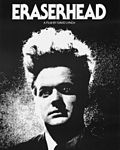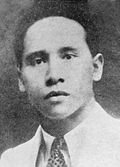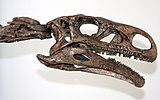Wikipedia:Today's featured article/March 2016
| << | Today's featured articles for March 2016 | >> | ||||
|---|---|---|---|---|---|---|
| Su | Mo | Tu | We | Th | Fr | Sa |
| 1 | 2 | 3 | 4 | 5 | ||
| 6 | 7 | 8 | 9 | 10 | 11 | 12 |
| 13 | 14 | 15 | 16 | 17 | 18 | 19 |
| 20 | 21 | 22 | 23 | 24 | 25 | 26 |
| 27 | 28 | 29 | 30 | 31 | ||
March 1
Girl Pat was a small fishing trawler based at the Lincolnshire port of Grimsby that caused a media sensation in 1936 with an adventurous transatlantic voyage using a sixpenny school atlas as its main navigational aid. The escapade ended in Georgetown, British Guiana, with the arrest of the trawler's captain, George "Dod" Orsborne. On 1 April 1936, Orsborne, with a crew of four, took the vessel out on what its owners authorised as a routine North Sea fishing trip. Nothing was heard of them until mid-May, when the owners received invoices relating to repairs and reprovisioning in the Spanish port of Corcubión. Subsequent sightings placed the trawler in the Savage Islands, at Dakar in Senegal, and at Îles du Salut off the coast of French Guiana in South America. After the vessel's capture and detention on 19 June, the crew were hailed as heroes by much of the world's press. Orsborne returned to England and was tried and imprisoned for the theft of the vessel. Years later he made an uncorroborated claim that the Girl Pat voyage had been an undercover mission carried out on behalf of British Naval Intelligence. (Full article...)
March 2
The Battle of Agua Dulce was a skirmish on March 2, 1836, in Tamaulipas, Mexico, during the Goliad Campaign of the Texas Revolution. Mexican troops surprised rebellious colonists from the Mexican province of Texas, primarily immigrants from the United States, known as Texians. By the end of 1835, Texians had expelled all Mexican troops from their province. In February Frank W. Johnson, the commander of the volunteer army in Texas, along with James Grant, was leading a planned invasion of the Mexican port town of Matamoros. Unbeknownst to the Texians, Mexican General José de Urrea was leading troops from Matamoros into Texas to neutralize the rebels gathered along the coast. His troops easily defeated Johnson's small force on February 26. Several days later, informants revealed the location of another small force led by Grant, and on the morning of March 2, Urrea sent 150 troops who ambushed and defeated them. Grant fled but was killed, as were 11 men under his command. Six Texians were taken prisoner, and Urrea jailed them instead of executing them, contrary to Santa Anna's orders. Another six Texians escaped, five of whom later died in the Goliad Massacre. (Full article...)
March 3
Master of Puppets is the third studio album by American heavy metal band Metallica, released on March 3, 1986, by Elektra Records. It was the first Metallica album released on a major label, and the last to feature bassist Cliff Burton, who died in a bus crash in Sweden during the album's promotional tour. It was recorded at the Sweet Silence Studios with producer Flemming Rasmussen. Master of Puppets received critical acclaim for its atmospheric and meticulous approach to American thrash metal, and has been included in several publications' best album lists. Its driving music and angry, political lyrics drew praise from critics outside the metal community. The album is considered the band's strongest effort of the period, and remains one of the most influential heavy metal albums. It peaked at number 29 on the Billboard 200 and became the first thrash metal album to be certified platinum. In 2003 the Recording Industry Association of America certified at least six million copies shipped, and in 2012 Music Canada certified 600,000 copies. (Full article...)
March 4
The Percheron is a draft horse that originated in the Huisne river valley, part of the former Perche province in France from which the breed takes its name. Usually gray or black, Percherons are well muscled, and known for their intelligence and willingness to work. Ancestors of the breed were present in Huisne by the 17th century, and were originally bred to be war horses. Over time, they were used for farm work, pulling stage coaches, and hauling heavy goods. The first purebred Percheron stud book was created in France in 1883. In the late 19th century, thousands of Percherons were shipped from France to the US, but after World War I began, some were shipped back to France to help in the fighting. In 1918 breeding of Percherons began in Great Britain and the British Percheron Horse Society was formed. The current US Percheron registry was created in 1934. Their numbers declined substantially after World War II, but later rebounded. The breed is still used today for riding, for pulling carriages and for heavier draft work. They have been crossed with light horse breeds to produce horses for a wide range of uses. (Full article...)
March 5
Dream of the Rarebit Fiend was a newspaper comic strip by American cartoonist Winsor McCay, begun September 10, 1904, that depicted fantastic bizarre dreams. It was McCay's second successful strip, after Little Sammy Sneeze secured him a position on the cartoon staff of the New York Herald. Rarebit Fiend was printed in the Evening Telegram, a newspaper published by the Herald. The strip had no continuity or recurring characters. Instead, it had a recurring theme: a character would have a nightmare or other bizarre dream, usually after eating a Welsh rarebit—a cheese-on-toast dish. The dreams often revealed unflattering sides of the dreamers' psyches—their phobias, hypocrisies, discomforts, and dark fantasies. The strip is mostly recognized as an adult-oriented precursor to McCay's signature strip, Little Nemo. The popularity of Rarebit Fiend and Nemo led to a job with William Randolph Hearst's chain of newspapers with a star's salary. Many characters from the strip, such as giant monsters laying waste to cities, anticipated later fiction and films, including King Kong and Godzilla. (Full article...)
March 6
Iven Mackay (1882–1966) was a senior Australian Army officer who saw action in both World Wars. He served with the 4th Infantry Battalion at Gallipoli, distinguishing himself in hand-to-hand fighting at the Battle of Lone Pine. On the Western Front, he assumed command of the 4th Battalion in 1916 and led the 1st Infantry Brigade in 1918. After the war he studied physics at the University of Cambridge under Ernest Rutherford. He remained in the Militia between the wars, and was a major general by the time the Second World War broke out. He commanded the 6th Division through the Australian Army's first battles of the war. During the Battle of Bardia in 1941, the 6th Division captured the fortified town along with 36,000 Italian prisoners; Mackay was knighted for this success. In the Battle of Greece, he became the only Australian general to face the Waffen-SS in battle. He was recalled to Australia in 1941, commanding the Home Forces and New Guinea Force as a lieutenant general. His active service ended in 1943 with his appointment as High Commissioner to India. (Full article...)
Part of the Command in the South West Pacific Area featured topic.
March 7

Bristol is a city in South West England. With an estimated population of 442,500 in 2015, it is the second most populous city in Southern England and the eighth in the UK. Iron Age hill forts and Roman villas were built near the confluence of the Rivers Frome and Avon, and around the beginning of the 11th century the settlement was known as Brycgstow (Old English for "the place at the bridge"). Bristol received a royal charter in 1155, and became a county in 1373. A major commercial port from the 12th century, it was the starting place for early voyages of exploration to the New World, including the 1497 expedition in which John Cabot became the first European since the Vikings to land on mainland North America. One of the top four English cities in tax receipts from the 13th to the 18th century, Bristol's prominence declined during the Industrial Revolution. Its modern economy is built on the creative media, electronics and aerospace industries. The city-centre docks closed in the 20th century, and have been redeveloped as centres of heritage and culture. The city is among the most popular tourist destinations in the UK. (Full article...)
March 8
Ellen Wilkinson (1891–1947) was a British Labour Party politician, Member of Parliament (MP) for Jarrow from 1935 to 1947 and Minister of Education from July 1945 until her death. In 1936 she was a leader of the Jarrow March, an iconic symbol of 1930s unemployment and impoverishment. On graduating from the University of Manchester in 1913, Wilkinson worked mainly as a trade union official, and was briefly a member of the British Communist Party before becoming Labour MP for Middlesbrough East in 1924. After losing her seat in the 1931 general election she worked as a writer and journalist before resuming her parliamentary career in 1935. A strong advocate for the Republican faction in the Spanish Civil War, she made several visits to the battle zones. During the Second World War Wilkinson served in Churchill's wartime coalition as a junior minister. By the time she achieved cabinet office in Clement Attlee's postwar Labour ministry she was in poor health due to constant overwork, and was able to promote only modest educational reforms. She died of an accidental overdose of medication while under treatment for an acute bronchial disease. (Full article...)
March 9
Anfield is an association football stadium in Anfield, Liverpool, England. With a seating capacity of 44,742, it is the seventh largest football stadium in England. It was the home of Everton F.C. from 1884 until a rent dispute in 1891, and has been the home of Liverpool F.C. since their formation in 1892. The stadium has four stands: the Spion Kop, Main Stand, Centenary Stand and Anfield Road. The record attendance of 61,905 was set at a match between Liverpool and Wolverhampton Wanderers in 1952. The ground was reduced to an all-seater stadium in 1994 on the recommendation of the Taylor Report. It has two gates named after the former Liverpool managers Bill Shankly and Bob Paisley, with a statue of Shankly at the visitors' centre outside. The ground is 2 miles (3 km) from Liverpool Lime Street railway station. A proposal in 2002 to replace the stadium with a new one in the adjacent Stanley Park was rejected by Fenway Sports Group, who acquired the club in 2010. Construction on the Main Stand to increase the stadium size to around 54,000 began on 8 December 2014. (Full article...)
Part of the Liverpool F.C. featured topic.
March 10
Jacob van Ruisdael (c. 1629 – 1682) was a prolific and versatile Dutch artist, generally considered the pre-eminent landscape painter of the Dutch Golden Age. During this period of great wealth and cultural achievement when Dutch painting became highly popular, his father and uncle were also landscape artists. His earliest works, dating from 1646, show remarkable quality for his age. He moved from his Haarlem birthplace to Amsterdam around 1657, where he lived until his death. Ruisdael painted a wide variety of landscape subjects, including Dutch countryside scenes, city panoramas, seascapes, and Scandinavian waterfalls. The sky often takes up two thirds of the canvas. His accurate rendering of trees was unprecedented, and he is particularly known for his paintings of mills, such as Windmill at Wijk bij Duurstede (pictured). Ruisdael shaped landscape painting traditions worldwide, influencing the English Romantics, the French Barbizon School, and the American Hudson River School, as well as generations of Dutch landscape artists. The National Gallery, the Rijksmuseum, and the Hermitage Museum hold the largest collections of his paintings. (Full article...)
March 11
The Morgan dollar coin was minted from 1878 to 1904, and again in 1921. It is named for its designer, U.S. Mint Assistant Engraver George T. Morgan. The obverse depicts a profile portrait representing Liberty, while the reverse depicts an eagle with wings outstretched. The Coinage Act of 1873, which stopped the minting of silver dollars, was reversed by a series of laws supporting production of the Morgan dollar. The Bland–Allison Act of 1878 required the Treasury to purchase between two and four million dollars' worth of silver at market value to be coined into dollars each month. In 1890 that act was repealed by the Sherman Silver Purchase Act, which required the Treasury to purchase 4,500,000 troy ounces (140,000 kg) of silver each month, but this act too was repealed, in 1893. An 1898 law required all remaining bullion to be coined into silver dollars, and when those reserves were depleted in 1904, production of the Morgan dollar ended. The Pittman Act, passed in 1918, authorized the melting and recoining of millions of silver dollars, and the Morgan dollar resumed mintage for one year in 1921, before its replacement by the Peace dollar later the same year. (Full article...)
March 12
Isabella Beeton (1836–1865) was an English journalist and editor, and the author of Mrs Beeton's Book of Household Management. She married Samuel Orchart Beeton, an ambitious publisher and magazine editor, in 1856. Less than a year later, she began writing for one of his publications, The Englishwoman's Domestic Magazine. She translated French fiction and wrote the cookery column, though all the recipes were plagiarised from other works, or sent in by the magazine's readers. In 1859 the Beetons launched a series of 48-page monthly supplements to the magazine; the 24 instalments were published in one volume as the Book of Household Management in October 1861, which sold 60,000 copies in the first year. Isabella was working on an abridged version of her book when she died of puerperal fever at the age of 28. She had given birth to four children, two of whom died in infancy, and had had several miscarriages. Two of her biographers posit the theory that Samuel had unknowingly contracted syphilis in a premarital liaison with a prostitute, and had passed the condition on to his wife. (Full article...)
March 13
Asahi was a pre-dreadnought battleship built in Britain for the Imperial Japanese Navy in the late 1890s. As flagship of the Standing Fleet, Asahi was in every major naval battle of the Russo-Japanese War of 1904–05. The ship saw no combat during World War I, but participated in the Siberian Intervention in 1918. Reclassified as a coastal defence ship in 1921, Asahi was disarmed two years later to meet the terms of the Washington Naval Treaty, then served as a training and submarine depot ship. The ship was modified for marine salvage and rescue before being placed in reserve in 1928. Asahi was recommissioned in late 1937, after the start of the Second Sino-Japanese War, and used to transport Japanese troops. In 1938 the ship was converted into a repair ship and based first at Japanese-occupied Shanghai, China, and then Camranh Bay, French Indochina, from late 1938 to 1941. The ship was transferred to occupied Singapore in early 1942 to help repair a damaged light cruiser and ordered to return home in May. Asahi was sunk en route by the American submarine USS Salmon, but most of the crew survived. (Full article...)
March 14
Sarcoscypha coccinea, commonly known as the scarlet elf cup, is a species of fungus in the family Sarcoscyphaceae of the order Pezizales. Widely distributed in the Northern Hemisphere, it has been found in Africa, Asia, Europe, North and South America, and Australia. It grows on decaying sticks and branches in damp spots on forest floors, generally buried under leaf litter or in the soil. The cup-shaped fruit bodies are usually produced during the cooler months of winter and early spring. The brilliant red interiors of the cups, from which the common and scientific names are derived, contrast with the lighter exteriors. The edibility of the fruit bodies is not clearly established, but their small size, tough texture and insubstantial fruitings would dissuade most people from collecting for the table. The fungus has been used medicinally by the Oneida Indians, and as a colorful component of table decorations in England. The species Molliardiomyces eucoccinea is an imperfect form of the fungus that lacks a sexually reproductive stage in its life cycle. (Full article...)
March 15
State Route 78 is a state highway in California that runs from Oceanside east to Blythe, a few miles from Arizona. Its western terminus is at Interstate 5 in San Diego County and its eastern terminus is at Interstate 10 in Riverside County. The route is a freeway through the heavily populated cities of northern San Diego County and a two-lane highway running through the Cuyamaca Mountains to Julian. In Imperial County, it travels through the desert near the Salton Sea and passes through the city of Brawley before turning north into an area of sand dunes on the way to its terminus in Blythe. Portions of the route existed as early as 1900, and it was one of the original state highways designated in 1934. The freeway section in the North County of San Diego that connects Oceanside and Escondido was built in the middle of the 20th century in several stages, including a transitory stage known as the Vista Way Freeway, and has been improved several times. An expressway bypass of the city of Brawley was completed in 2012. There are many projects slated to improve the freeway due to increasing congestion. (Full article...)
March 16
Hurricane Charley was the costliest tropical cyclone of the 1986 Atlantic hurricane season. The third tropical storm and second hurricane of the season, Charley formed as a subtropical low on August 13 along the Florida panhandle. It became a tropical storm on August 15 off the coast of South Carolina, then as a hurricane traversed eastern North Carolina. It weakened over the north Atlantic Ocean before transitioning into an extratropical cyclone on August 20. Its remnants remained identifiable until crossing the British Isles and dissipating on August 30. In the U.S. Hurricane Charley caused an estimated $15 million in damage (equivalent to $32.4 million in 2016). As an extratropical cyclone, Charley brought heavy rainfall and strong winds to Ireland and the United Kingdom, causing at least 11 deaths. Ireland saw a record for the greatest daily rainfall total in the country, 7.8 inches (200 mm). In the Dublin area, 451 buildings were flooded, some up to a depth of 8 ft (2.4 m). In the United Kingdom, the storm flooded rivers and brought down trees and power lines. (Full article...)
March 17
Final Fantasy Type-0 is a Japanese video game produced by Square Enix in 2011 for the PlayStation Portable (PSP). It is an action role-playing game where players take the role of Class Zero, a group of fourteen students skilled in magic who are recruited by their superiors into a war between the four nations of Orience. The players also engage in large-scale strategy-based battles on the world map, and have access to a multiplayer option during story missions and side quests. Developed by the same staff as Crisis Core: Final Fantasy VII, Type-0 was designed as a departure from the traditions of the Final Fantasy series with its action-based gameplay and dark storyline. It was originally planned for both PSP and mobile, but the mobile version was cancelled in 2008. The game met with commercial success in Japan, and favorable reviews both in Japan and overseas. Plans for international versions were halted due to the flagging PSP market in the Western world. The first non-Japanese version of Type-0 was a fan translation into English in 2014. A high-definition remaster was released worldwide in 2015. (Full article...)
March 18
The Quietly Confident Quartet was the self-given name of the Australian men's 4 × 100 metres medley relay swimming team that won the gold medal at the 1980 Summer Olympics in Moscow. This was the only year since its inception that the event has not been won by the United States, which was boycotting the Moscow Olympics after the Soviet invasion of Afghanistan. The quartet consisted of backstroker Mark Kerry, breaststroker Peter Evans, butterflyer Mark Tonelli and freestyler Neil Brooks. Tonelli, the oldest at 23, was also a spokesperson for the Australian athletes' campaign to compete at the Olympics against the wishes of the Fraser Government. All four clashed with swimming authorities over disciplinary issues, and three were suspended or expelled from the Australian team. After the backstroke leg, Australia was in fourth place and more than a second behind, but Evans was the fastest breaststroker, moving into second position at the halfway point, and Tonelli completed his leg in a personal best time. Brooks overtook the Soviet swimmer Sergey Kopliakov in the latter half of the final leg to secure a narrow victory. (Full article...)
Part of the Quietly Confident Quartet featured topic.
March 19
Eraserhead is a 1977 American surrealist body horror film written and directed by filmmaker David Lynch. Shot in black-and-white, it is Lynch's first feature-length film, coming after several short works. Starring Jack Nance, Charlotte Stewart, Jeanne Bates, Judith Anna Roberts, Laurel Near, and Jack Fisk, it tells the story of Henry Spencer (Nance), who is left to care for his grossly deformed child in a desolate industrial landscape. Eraserhead spent several years in principal photography because of the difficulty of funding the film. It was produced with the assistance of the American Film Institute during the director's time studying there, and donations from Fisk and his wife Sissy Spacek kept production afloat. Lynch and sound designer Alan Splet spent a year working on the film's audio. Eraserhead earned positive reviews, especially for its intricate sound design, but only gained popularity after several long runs as a midnight movie. Its surrealist imagery and sexual undercurrents have been seen as key thematic elements. In 2004 the film was preserved in the National Film Registry by the Library of Congress. (Full article...)
March 20
Amir Hamzah (1911–1946) was an Indonesian poet and national hero. Born into an aristocratic Malay family in the Sultanate of Langkat, Sumatra, he began writing poetry while still a teenager. Though his works are undated, the earliest are from around 1930, when he first travelled to Java for schooling. He continued writing while studying in Surakarta and Batavia. He helped establish the literary magazine Poedjangga Baroe in 1932, and published his two poetry collections in it, Nyanyi Sunyi (1937) and Buah Rindu (1941). Amir stopped writing in 1937, when he grudgingly returned to Sumatra to marry the sultan's daughter and take on responsibilities of the court. After Indonesia proclaimed its independence in 1945, he served as the government's representative in Langkat; the following year he was killed in a socialist revolution and buried in a mass grave. His poetry deals with themes of love and religion, and often reflects a deep inner conflict. He has been called the "King of the Poedjangga Baroe-era Poets" and the only international-class Indonesian poet from before the Indonesian National Revolution. (Full article...)
March 21
The Final Cut is the twelfth studio album by the English progressive rock group Pink Floyd, first released on 21 March 1983 by Harvest Records in the UK. It was the band's last studio album to include founding member Roger Waters, who received sole credit for writing and composition. It is also the only Pink Floyd album to which keyboardist Richard Wright did not contribute. Waters originally planned The Final Cut as a soundtrack album for the 1982 film Pink Floyd – The Wall, but with the onset of the Falklands War, he rewrote it as a concept album and dedicated it to his father, who died during the Second World War. Waters sang most of the lyrics and designed the packaging to reflect the album's anti-war theme. The Final Cut was recorded from July to December 1982 in eight British studios, but the album's production was dominated by interpersonal conflict, and Waters left the band in 1985. Although it reached the top of the UK Albums Chart, the album received mixed reviews. (Full article...)
March 22
Plateosaurus (probably meaning "broad lizard"), a genus of plateosaurid dinosaur, lived around 214 to 204 million years ago during the Late Triassic period in what is now Central and Northern Europe. It was an early sauropodomorph dinosaur, a so-called "prosauropod". It is now among the dinosaurs best known to science: over 100 skeletons have been found, some of them nearly complete. The abundance of its fossils in Swabia, Germany, has led to the nickname Schwäbischer Lindwurm (Swabian lindworm). Plateosaurus was a bipedal herbivore with a small skull on a long, mobile neck, sharp but plump plant-crushing teeth, powerful hind limbs, short but muscular arms and grasping hands with large claws on three fingers, possibly used for defence and feeding. Plateosaurus showed strong developmental plasticity: instead of having a fairly uniform adult size, fully grown individuals were between 4.8 and 10 metres (16 and 33 ft) long and weighed between 600 and 4,000 kilograms (1,300 and 8,800 lb). The animals lived for at least 12 to 20 years, but the maximum life span is not known. (Full article...)
March 23
The nuckelavee is a horse-like demon from Orcadian mythology that combines equine and human elements. The name of this most horrible of all the demons of the Scottish islands may have the same root as Old Nick (the Devil). Though accounts describing the creature's appearance are inconsistent, its abilities are well-documented. The nuckelavee's breath can wilt crops and sicken livestock, and the creature has been held responsible for droughts and epidemics on land despite its being predominantly a sea-dweller. In common with many other sea monsters, it is unable to tolerate fresh water; therefore, those it is pursuing have only to cross a river or stream to be rid of it. The nuckelavee is kept in confinement during the summer months by the Mither o' the Sea, an ancient Orcadian spirit and the only one able to control it. This mythological creature may have originated as a composite of a water horse from Celtic mythology and a creature imported by Norsemen. (Full article...)
March 24
The Oppenheimer security hearing (1954) of the US Atomic Energy Commission (AEC) explored the background, actions and associations of J. Robert Oppenheimer (pictured). He had headed the Los Alamos Laboratory during World War II, where he played a key part in the Manhattan Project that developed the atomic bomb. Doubts about Oppenheimer's loyalty dated back to the 1930s, when he was associated with Communist Party USA members, including his wife and his brother. At Los Alamos and in the AEC, he was involved in bureaucratic conflict between the Army and Air Force over the types of nuclear weapons the country required, technical conflict between the scientists over the feasibility of the hydrogen bomb, and personal conflict with AEC commissioner Lewis Strauss. The panel found that he was loyal and discreet with atomic secrets, but did not recommend that his security clearance be reinstated. This ended his role in government and policymaking. He became an academic exile, cut off from his former career and the world he had helped to create. The findings were seen as fair by some and as an expression of anti-Communist McCarthyism by others. (Full article...)
March 25
Uncle David is a 2010 British black comedy film directed by David Hoyle, Gary Reich, and Mike Nicholls. It was produced by Reich and stars Hoyle, an English performance artist, in the titular role alongside Ashley Ryder, best known as a pornographic actor. Developed collectively under the banner of the Avant-Garde Alliance, it was filmed in October 2009. Created without a script, every scene was improvised and filmed in a single take. The film is set in a caravan park on the Isle of Sheppey in Kent, South East England, and follows a young man with a childlike mind named Ashley (Ryder), who asks to stay with his delusional Uncle David (Hoyle). Escaping from his abusive mother, Ashley enters into a sexual relationship with his uncle, who offers his insights into the world and the nature of reality. Eventually Ashley tells David that he wants to die, and David agrees to carry out the killing. The film premiered on 25 March 2010 at the London Lesbian and Gay Film Festival held in the BFI Southbank in central London. It won the Grand Prize at the Paris Gay and Lesbian Film Festival Awards 2010, but reviews were mixed. It was released on DVD by Peccadillo Pictures in 2011. (Full article...)
March 26
Winnipeg is the capital and largest city of the Canadian province of Manitoba. The name comes from Western Cree words for muddy or brackish water, referring to Lake Winnipeg, which is just north of the city along the Red River. The region was a trading centre for aboriginal peoples long before the arrival of Europeans. French traders built the first fort on the site in 1738. A settlement was founded in 1812 by the Selkirk settlers of the Red River Colony, the nucleus of which was incorporated as the City of Winnipeg in 1873. The census of 2011 lists Winnipeg as the seventh most populous municipality in Canada. Known as the "Gateway to the West", it is a transportation hub with a diversified economy. Its annual festivals include the Festival du Voyageur, the Winnipeg Folk Festival, the Jazz Winnipeg Festival, the Winnipeg Fringe Theatre Festival, and Folklorama. Winnipeg was the first Canadian host of the Pan American Games. It is home to several professional sports franchises, including the Winnipeg Blue Bombers (Canadian football), Winnipeg Jets (ice hockey), Manitoba Moose (ice hockey) and Winnipeg Goldeyes (baseball). (Full article...)
March 27
[[[Christ lag in Todes Banden, BWV 4|Christ lag in Todes Banden, BWV 4]]] Error: {{Lang}}: text has italic markup (help), is an Easter chorale cantata by Johann Sebastian Bach. Translated to "Christ lay in death's bonds" (pictured in an 18th-century Luther Bible), it is one of his earliest church cantatas, a genre to which Bach later contributed complete cantata cycles for all occasions of the liturgical year. The composition was probably intended for a performance in 1707, supporting his application for a post at a church in Mühlhausen. Both text and music are based on Martin Luther's Easter hymn of the same name. An opening sinfonia is followed by seven chorale variations per omnes versus: Bach used in each vocal movement the unchanged words and tune of a stanza of the chorale. The variations are arranged symmetrically: chorus–duet–solo–chorus–solo–duet–chorus, with the focus on the central fourth stanza about the battle between Life and Death. For his first Easter as Thomaskantor in Leipzig in 1724, Bach used the cantata again, and also for the following year as part of his cycle of chorale cantatas. In the extant score of the Leipzig performances, the four vocal parts are sometimes reinforced by a choir of trombones. (Full article...)
March 28
The 139th Boat Race took place on 27 March 1993. Held annually, the Boat Race is a side-by-side rowing race between crews from the Universities of Oxford and Cambridge along the River Thames. Cambridge, using "cleaver blades" for the first time in the history of the race, won by three-and-a-half lengths in a victory that was described in The Times as "crushingly conclusive". The winning time of 17 minutes exactly was the fourth fastest time in the event. Cambridge's victory prevented what would have been Oxford's seventeenth win out of the last eighteen races, which would have levelled the overall score for the first time since the 1929 race. Oxford's crew featured two Olympic gold medallists and saw changes in their rowers and cox in the lead-up to the event. The race was umpired by the former Oxford Blue Mark Evans, who controversially instigated changes to the start procedure of the race. In the reserve race, Cambridge's Goldie defeated Oxford's Isis, while Cambridge won the Women's Boat Race. (Full article...)
March 29
Benjamin Franklin Tilley (March 29, 1848 – March 18, 1907) was an officer in the United States Navy and the first acting governor of what is now American Samoa. He entered the Naval Academy at age 15 during the Civil War and graduated in 1866. In the wake of the Great Railroad Strike of 1877, he participated as a lieutenant in the military's crackdown against workers. During the 1891 Chilean Civil War, Tilley and a small contingent of sailors and marines defended the American consulate in Santiago, Chile. Commanding the gunship USS Newport in the Spanish–American War, he captured two Spanish Navy ships. After the war Tilley was promoted to captain and became the acting governor of Tutuila and Manua, present-day American Samoa, where he set legal and administrative precedents for the new territory. Tilley's successor, Captain Uriel Sebree, praised his "great ability, kindness, tact and sound common sense". He was promoted to rear admiral after almost 41 years of naval service, but died within a month from pneumonia. (Full article...)
March 30
Jumping Flash! is a platform video game co-developed by Exact and Ultra and published by Sony Computer Entertainment. The first instalment in the Jumping Flash! series, it was released in April 1995 for the PlayStation in Japan and later the same year in Europe and North America; it was re-released through the PlayStation Network store on PlayStation 3 and PlayStation Portable in 2007. Presented in a first-person perspective, the game follows a robotic rabbit named Robbit as he searches for missing jet pods that have been scattered by the game's antagonist character, the astrophysicist Baron Aloha. The game has been described as an early showcase for 3D graphics in console gaming. Generally well received by critics, who praised its graphics and unique gameplay, it was later overshadowed by 3D platformers of the fifth console generation. It was described as the third-most underrated video game of all time by Matt Casamassina of IGN in 2007, and holds the Guinness World Record as the "First platform video game in true 3D". (Full article...)
March 31
Tank Girl is a 1995 American science-fiction action-comedy film directed by Rachel Talalay. Based on the British post-apocalyptic comic series of the same name by Alan Martin and Jamie Hewlett that was originally published in Deadline magazine, the film stars Lori Petty, Naomi Watts, Ice-T and Malcolm McDowell. Set in a drought-ravaged Australia after a catastrophic impact event, the story follows the antihero Tank Girl (Petty) as she, Jet Girl (Watts), and genetically modified supersoldiers called the Rippers fight "Water & Power", an oppressive corporation led by Kesslee (McDowell). Tank Girl was filmed primarily in White Sands, New Mexico, and Tucson, Arizona. The critically praised soundtrack was assembled by Courtney Love, and the Rippers' makeup and prosthetics team was headed by Stan Winston. The film recouped only about $6 million of its $25 million budget at the box office. Talalay blamed some of the film's negative reception on studio edits over which she had no control. Despite mixed to negative reviews, it has drawn a cult following, in part for its feminist themes. (Full article...)




















